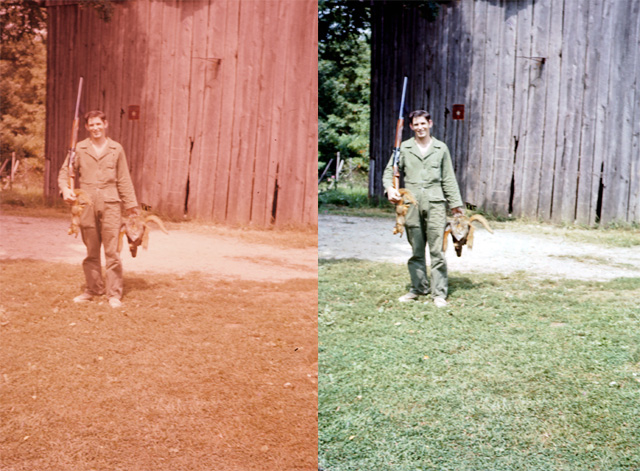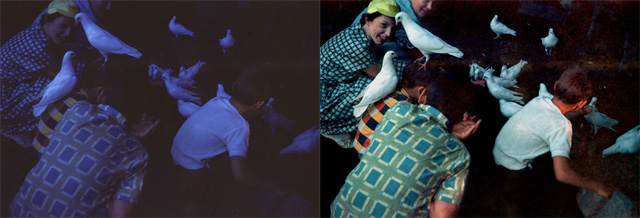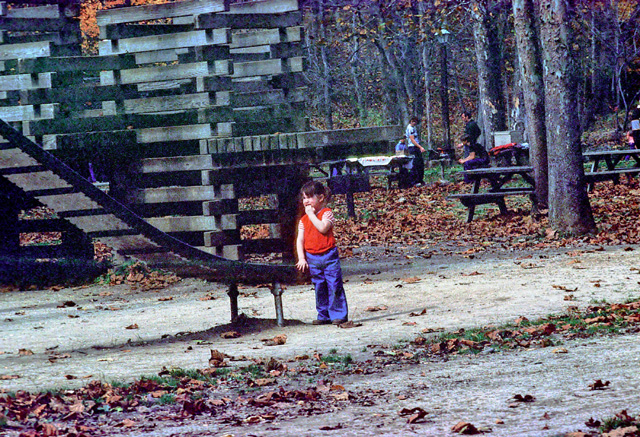

It seems fitting that I am writing this on Memorial Day, a day to remember. It is a day to remember the men and women who died in the service of our country, but in the southeastern United States, it is sometimes still called Decoration Day, a day to decorate or place flowers on the graves of family members. It has also become a day of picnics and family get-togethers.
Until our mother was no longer able to host the gathering, many family members gathered to celebrate with my parents, Bob and Virginia Hopkins. All were welcome. Grandparents, aunts, uncles, their children, grandchildren, nieces and nephews. Nearly every year I think back to one bittersweet Memorial Day when I knew it wasnít likely that my son would celebrate many more holidays with us. The weather was perfect that day. Motherís fried chicken was superb, and we had all the other dishes that seemed to go with our holidays. My brother Bob rented a plane and took some of us flying over the countryside we knew. He had arranged this as a special treat for my son. And of course, Dad had the camera ready to capture the bits of the day that were special to him. As I drove home that evening, I listened to Milton Metz on the radio. He asked listeners to call and talk about how they had celebrated Memorial Day. Not wanting to let this perfect day come to an end, I called when I got home to share the pleasure of spending the day with people I loved, having our traditional meal, and the airplane ride. Dadís photos of that day will come in a later DVD. [See DVD2 June 1971 Roll 1]
I am grateful that Dad loved taking pictures because he has left us a world of memories. He documented family events with his camera. Birthday after birthday. Vacations around the United States, with of course, the requisite visit to the state capitols if we were anywhere near. The images of beloved grandparents, aunts and uncles. Classmates and school events. Weddings. Many photos of the church and the members who were so dear to him. The last time I remember seeing a camera in Dadís hands, he was in his mid-80s, trying to photograph the wedding of another of his beloved grandchildren.
Thanks to Dad, each of us will find special memories and perfect days in these photos. Thanks to Dad, his great-grandchildren and their children will have a visual family history, a gift to treasure. If there is a heaven, I know that Dad had his camera in hand today, taking pictures of whatever held special meaning for him. I miss you, Dad.
Carolyn Hopkins Jones
May 28, 2007
Robert Hopkins shot a lot of pictures. He always used slide film, rather than negative film. We found 8,792 of his slides. The task of scanning the slides, estimated to take about one year, was begun by Robert Hopkins Jr. in January 2007. The scanning was completed two years later on January 17, 2009!
Before the late 1950s, Kodak slides did not show a date on the slide mount. Dad's collection of slides began in the spring of 1952. Because we were unable to group the undated slides by roll, we grouped them by subject matter, and roughly by date. The nomenclature used for the electronic copy of those slides begins with "50s" for the "1950s", and then two digits "xx" to designate the group number, followed by a dash and two digits "yy" to designate the slide number. For example, 50s18-17 is the seventeenth picture in the eighteenth group of the undated 1950s slides.
Slides with dates were grouped by the roll and in the order determined by the number stamped on the slide mount by Kodak during processing (with the exception noted in the following paragraph). The nomenclature used for the electronic copy of these slides begins with two digits to show the year, then two digits to show the month, then a single letter starting with "a" to show the first roll of film during that month, "b" to show the second roll of film during that month, etc. For example, 6509c-20 is the twentieth picture from the third roll of film processed in September 1965. Frequently, slides are missing. The numerical sequence we used skips those slides. As a result, the number on the electronic copy is not a match with the number on the slide. While that may have made it easier to match a physical slide with the electronic copy, it would have made the processing of the images much more difficult.
We found that a few rolls were exposed, but then not processed for many months. In the cases we were able to identify, we did not use the Kodak numbers for the processing date, but rather our own numbers to more closely match the exposure date. We found it was confusing if we did not make this change. As an example, we found pictures of children celebrating birthdays that would have occurred two years earlier! Also, we found two rolls of film that had been exposed but never processed. We had the rolls processed, then placed them in their proper chronological location. One roll had processing delayed for 20 years, the roll had remained refrigerated during the 20 years. Processing of the other roll was delayed for 30 years, the roll had remained in a camera during the 30 years. While the pictures on both rolls were faded, the roll that had remained refrigerated was "fixable" with electronic color processing; the colors of the pictures in the roll that had remained in a camera were distorted and could not be fixed with electronic processing.
The nomenclature adopted for the slides means every one of the images has a different name. If every one of the electronic copies were put in the same directory, a simple alphanumeric sort would place them in the proper order. Plus, the name tells the approximate date. The physical slides are stored in the same order in nine metal boxes, so it is easy to find the physical slide knowing the image number.
The slides were scanned using a Nikon "Super Coolscan 5000 ED" with an SF-210 Slide Feeder. Post processing was performed using Adobe Photoshop 7. Prior to scanning, each slide was cleaned using a hand-held rubber blower and an anti-static brush.
The resolution of most of the slide masters is 3000 x 2047 pixels. The masters are not available on the Web site. The images placed on the Web site are usually 480 x 329 pixels. The thumbnails are usually 90 x 61 pixels.
The slides from the 1950s were too fragile to be fed with the slide feeder, so each of those slides was fed by hand. Also, the slides from the 1950s had significantly more dirt and required manual clean-up in Photoshop, in some cases extensive cleaning. Most of the newer slides did not require manual clean-up.
Some of the older slides had faded and appeared to be overexposed and pink in color. The Nikon scanner, using its "reconstructure of color" mode, was able to repair most of these slides. Below is an example of a faded Ektachrome slide from about 1955. On the left is the raw scanned image, which very closely demonstrates the appearance of the slide when viewed with a normal slide viewer. On the right is the resulting image after special processing by the Nikon Scanner and additional processing in Photoshop.

The scanner also was able to repair most overexposed slides and underexposed slides using its "dynamic exposure extender" modes. Below is an example of an underexposed Kodachrome slide from 1952. On the left is the raw scanned image, again very closely demonstrating the appearance of the slide. On the right is the resulting image after special processing.

While scanning the slides for the fourth Disk, an even more startling example of the Nikon scanner's ability to pull details from an underexposed slide was found. Below is an underexposed Kodachrome slide from 1979, very closely demonstrating the appearance of the slide. Below that is the resulting image after special processing in the scanner. It was shocking to see the newly discovered color details when the image popped up on the screen!


The philosophy followed in scanning the slides was as follows: 1) If the slide is a good looking slide, make the electronic copy look like the slide; 2) If the slide is overexposed, underexposed, or has incorrect color balance, make the electronic copy look as good as possible, trying to simulate what Dad would have expected the picture to look like; and 3) Scan and preserve every single slide, no matter what fault the slide may have.
Rolls are broken up into 4 groups called "Disks" (matching the DVDs that contain the masters). Clicking on a Disk takes you to a page listing the rolls on that Disk. Clicking on a roll takes you to a set of thumbnails for that roll. Clicking on a thumbnail takes you to that slide. You can go directly from the thumbnails of one roll to the thumbnails of the next roll by using the arrows at the top of the page, and you can go directly from one slide to the next by using the arrows.
An index for the slides on each Disk, compiled and edited by Larry Hopkins, is available on each Disk page.
Robert Hopkins Jr.
September 22, 2007
Updated September 12, 2009